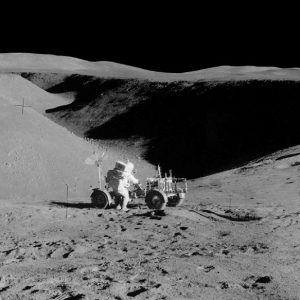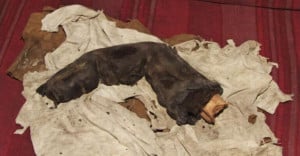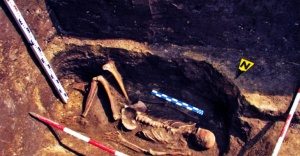On October 7th, 2023, Israel faced one of its gravest tragedies since the Holocaust, a devastating attack by Hamas that led to the destruction of communities, the death of at least 1,400 Jewish individuals, and the abduction of many innocents. This act not only deepened the wounds of an already conflicted region but also illuminated the complex narrative surrounding the Temple Mount, a site of significant religious tension.
In a response articulated through a television speech by Abu Abeda, the military spokesman for the Hamas Al-Qassam Brigades, it was claimed that the attack was a defensive measure aimed at protecting the Temple Mount, the Al-Aqsa Mosque, and the Dome of the Rock. Abeda’s assertion was that this act of aggression was provoked by Jewish plans to sacrifice a red heifer, an act with profound religious implications, suggesting the beginning of an endeavor to build the Third Temple in Jerusalem.
What is The Significance Of The Red Heifer?
Today, it is presumed that all Jews, including the kohanim (priests), carry the impurity associated with contact with a dead body. In contemporary life, this state of impurity generally does not impact daily activities. However, this specific type of impurity bars entry into the Temple.
Thus, kohanim affected by this impurity are unable to perform the necessary rituals within the Temple. They must undergo purification through the ashes of a red heifer to resume their duties, highlighting the importance of producing these ashes for any efforts to revive the Temple in Jerusalem. An exception exists for the Passover sacrifice, which can be conducted even by those impure from contact with a corpse, provided that the majority of the Jewish community shares this state of impurity.
Ushering In Of The Third Temple
The import of blemish-free red heifers from Texas to Israel for this sacrifice was not just a religious act but was seen as a direct challenge to the status quo of the Temple Mount, promising to alter its longstanding religious equilibrium. The Temple Institute, spearheading these efforts, sees the red heifer sacrifice as a pivotal step toward the construction of the Third Temple, a goal laden with eschatological significance.
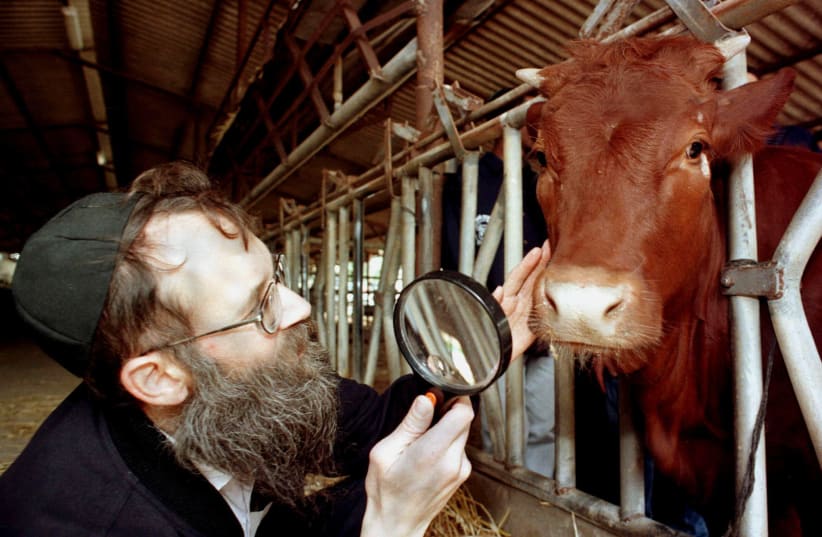
The red heifer sacrifice, deeply rooted in the Old Testament, particularly in the Book of Numbers Chapter 19, is detailed as a purification ritual, essential for the religious and ceremonial purity required for the building of the Third Temple. This act signifies not just a physical but a spiritual preparation for a new era.
“And the Lord spake unto Moses and unto Aaron, saying, This is the ordinance of the law which the Lord hath commanded, saying, Speak unto the children of Israel, that they bring thee a red heifer without spot, wherein is no blemish, and upon which never came yoke. And ye shall give her unto Eleazar the priest, that he may bring her forth without the camp, and one shall slay her before his face: And Eleazar the priest shall take of her blood with his finger, and sprinkle of her blood directly before the Tabernacle of the congregation seven times: And one shall burn the heifer in his sight; her skin, and her flesh, and her blood, with her dung, shall he burn: And the priest shall take cedar wood, and hyssop, and scarlet, and cast it into the midst of the burning of the heifer. And for an unclean person they shall take of the ashes of the burnt heifer of purification for sin, and running water shall be put thereto in a vessel: And a clean person shall take hyssop, and dip it in the water, and sprinkle it upon the tent, and upon all the vessels, and upon the persons that were there, and upon him that touched a bone, or one slain, or one dead, or a grave”
– Numbers 19: 1-2
The esteemed rabbi and philosopher Maimonides noted that, from the time of Moses, nine red heifers have been offered in sacrifice. The most recent of these ceremonies occurred shortly before the Roman destruction of the second temple, conducted on the Mount of Olives, which faces the Temple Mount. Maimonides further posits that the sacrifice of the 10th red heifer will herald the advent of a Messianic era. This perspective highlights the profound religious and historical weight of the potential act, underscoring its significance beyond the immediate political tensions it has inflamed.
The decision to perform this sacrifice on the Mount of Olives, directly across from the Temple Mount, is steeped in symbolism and practical religious considerations. This location, by virtue of its historical and religious significance, serves as the perfect backdrop for a ritual that seeks to bridge past and future Jewish religious aspirations.
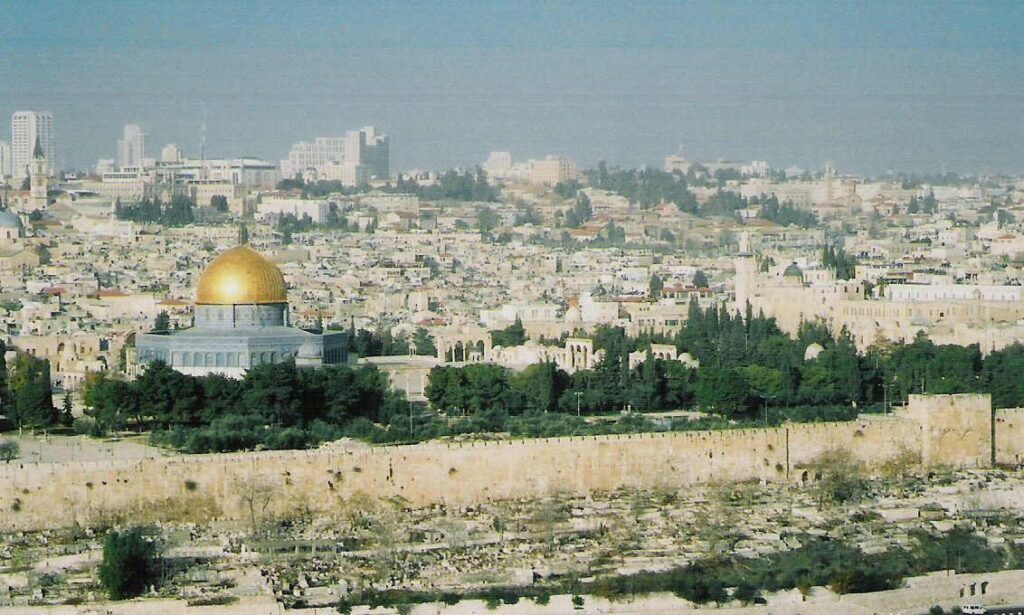
However, today’s geopolitical reality complicates this religious narrative. The presence of the Dome of the Rock and the Al-Aqsa Mosque on the Temple Mount presents a significant barrier to Jewish religious rites, illustrating the intricate web of religious, historical, and political claims to this sacred space.
Yehuda Glick, a prominent activist for Jewish rights on the Temple Mount, embodies the intersection of these complex dynamics. Surviving an assassination attempt, Glick’s advocacy for Jewish prayer rights on the Temple Mount has garnered significant attention and controversy, highlighting the deep divisions and passions this issue stirs.
What We Can Expect
The notion of building the Third Temple, once considered a fringe idea, has gained mainstream traction within certain segments of Israeli society, reflecting a significant shift in the religious and political discourse surrounding the Temple Mount. This shift is underscored by Glick’s observation that a growing number of Knesset members support this cause, marking a significant moment in the evolving narrative of this sacred space.
As preparations for the red heifer sacrifice proceed, the tensions between the Jewish and Arab communities remain palpable, a reminder of the fragile peace that hangs in balance over Jerusalem. This moment in history, marked by religious fervor, political strife, and the enduring hope for redemption, encapsulates the profound complexities of the Israeli-Palestinian conflict and the broader Middle Eastern dilemma.
In this context, the unfolding events around the Temple Mount and the proposed red heifer sacrifice are not merely religious acts but are deeply entwined with the aspirations, fears, and enduring quest for peace in a region that remains at the heart of global religious and geopolitical concerns. As the world watches, the actions taken in the coming months could have far-reaching implications for the pursuit of peace and reconciliation in the Middle East.

